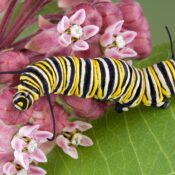The Angry Birds phone App seems to make a lot of folks happy, or at least takes their mind off annoying things like jobs, money, and watching where they step. Move over, Angry Birds – it turns out the Bluebird of Happiness can bring everyone joy and contentment for free. It’s what you might call an “Actual Reality” application, and it only works when your phone is off. Two studies done in 2020, one German and one American, show that birds in general (they need not be blue) raise our level of happiness markedly. Even listening to birdsong makes us feel better about life.
But this is old news. For thousands of years, birds — often blue ones — the world over have been raising the spirits of people who didn’t need science to prove they felt better around our feathered friends. From the Shang Dynasty some 3,700 years ago to modern times, the Asian fairy bluebird has been esteemed as a herald of good luck and happiness in many parts of Asia.

For Americans, the idiom “Bluebird of Happiness” first took wing in 1910 with the Broadway play The Blue Bird. The phrase really gained altitude in the 1940s, when the song “Bluebird of Happiness” soared to fame. The ditty was penned in The Great Depression, because there’s nothing like 25 percent unemployment and a 70 percent poverty rate to put one in the mood to write “For life is sweet, tender, and complete when you find the bluebird of happiness.” Blissed-out bluebirds continue to flit through popular culture in films, ads, and dozens of songs, including Paul McCartney’s 1974 track “Bluebird” and Neil Young’s 2007 “Beautiful Bluebird.”
It’s lucky for us that bluebirds don’t have a monopoly on the joy-delivery business. Otherwise, winters up north would be even more bleak. The fact is, all birds brighten our mood, from drab-grey pigeons to dazzling scarlet tanagers. And the greater the diversity of birds we have near our homes, the better we feel.
This effect is based on substantial evidence. In the largest study of its kind, a team of German scientists examined life-satisfaction surveys from 26,000 adults from across Europe. They found that any bird is good for our mood – simply viewing urban starlings will help promote a sense of well-being. But the more species, the merrier. According to team leader Joel Methorst, a researcher at the Senckenberg Biodiversity and Climate Research Centre in Frankfurt, Germany, people who live where they can watch many different bird species are the happiest.
The study revealed that one’s enjoyment of life corresponds to the number of bird species in their environment. Its most striking conclusion is that an additional 10 percent more bird species in a person’s surroundings will raise their life satisfaction like a 10 percent pay increase would. Wow. I just hope there’s no tax on richness of bird species.

Having high bird diversity indicates a landscape that is varied and rich as well; closer to a natural state. This alone has a positive effect on us. Numerous studies have proven that merely looking at a tree out the window shortens post-surgery hospital stays. And if we walk or sit the in woods for just 20 minutes, the benefits are tremendous. This is known as “forest bathing,” and doctors in many countries, including the U.S., prescribe it to treat anxiety, depression, and other conditions.
Of course, not everyone has access to a bird-filled wild backyard or a forest in which to immerse themselves. Well, Mother Nature has a sonic tonic to help homebodies feel happier. A study done through California Polytechnic State University determined that listening to a few minutes of birdsong improves one’s outlook. It’s like an antidepressant, but you don’t have to wait three weeks for it to kick in.
The Cal Poly research team hid speakers along two trail segments in the Open Space and Mountain Parks in Boulder, Colorado, and interviewed hikers coming off the trails each day over the summer. Every other week, recorded songs from a variety of bird species played along the trails, followed by a week without playback.
In terms of self-reported happiness, the contrast between the “on” and “off” weeks was stark, with more happy campers on weeks when faux-birdsong serenaded them on their hike. Team leader Professor Clinton Francis of Cal Poly reported being “flabbergasted” that a scant 7-10 minutes of bird sounds improved people’s well-being notably.
Inviting more kinds of birds to your yard is pretty simple. In large part, it means embracing a touch of the wild. Highly manicured yards attract few species, whereas a natural design is more hospitable to a broad variety of birds (along with an equivalent “pay raise” in pleasure). For example, the Cornell Lab of Ornithology recommends leaving flower beds messy in the fall to give birds cover. The Audubon Society has further advice on how to make your landscape more bird-friendly. If you want to entice the “real deal” into your yard, this Audubon page has a wealth of information on attracting native bluebirds.
If you’re feeling blue, feathered friends of any color are birds of happiness.
Become a Saturday Evening Post member and enjoy unlimited access. Subscribe now




Comments
Dame Vera Lynn used to sing during WW-2 “Blue Birds of Happiness”.
Well there are no blue birds in the UK, at least not the blue birds we are aware of in the USA and Canada.
The song was the allusion to the RAF/RCAF pilots in their blue uniforms.
Most Brits kknew what was meant, it that is what helped them through some of the worst times.
Happy July 4th to the American readers.
Gord Young-Peterboro ON